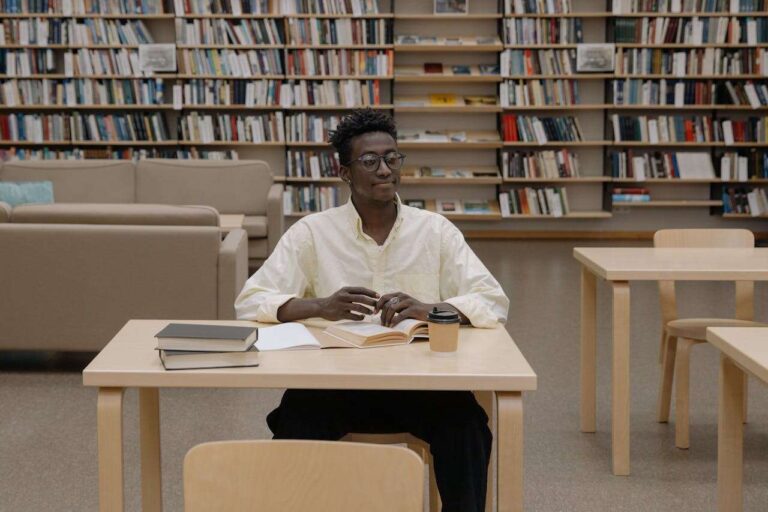As someone deeply entrenched in the International Baccalaureate world, I’ve come to appreciate the unique challenges and joys of the Theory of Knowledge exhibition. One of the crucial elements of the TOK exhibition is choosing objects. In my years of experience, I’ve seen how the right choice can illuminate complex TOK concepts. So, let’s talk about /TOK exhibition objects and how to make your selection stand out.
What is the TOK Exhibition’s Purpose?
First and foremost, let’s dig into what the TOK exhibition aims to accomplish. It’s far more than a mere display; it is a dynamic showcase of how you interpret and connect key TOK concepts to the tangible world around us. In my opinion, selecting objects for TOK exhibition is crucial. These chosen items become the lens through which your understanding of complex knowledge questions is examined and articulated.
From my extensive experience, the good objects for TOK exhibition often possess a simple exterior yet encapsulate profound significance. They are stories, symbols, and gateways to more profound thought. They challenge the viewers’ perceptions and provoke insightful discussions. For instance, a seemingly ordinary wristwatch can become a profound representation of the concept of time and its implications on human understanding and knowledge.
To give you a clearer picture, here’s a list of characteristics that, in my experience, make for compelling objects in a TOK exhibition:
- Relevance to TOK Themes. The object should directly relate to one or more TOK themes and TOK exhibition prompts as a practical example of abstract concepts.
- Capacity to Provoke Thought. Choose an object that sparks curiosity and invites viewers to question and ponder deeper philosophical ideas.
- Personal Connection. An object with a personal story or significance can add depth and authenticity to your exhibition, making it more engaging.
- Cultural or Historical Significance. Objects with cultural, historical, or societal connotations can enrich the discussion around knowledge and its contexts.
- Simplicity with Depth. An object that appears simple but holds layered meanings or interpretations can be powerful.
- Visual Appeal. While not the primary focus, aesthetically attractive TOK objects for exhibition can draw more attention and engagement from the audience.
- Interactive Potential. If the object can engage the audience interactively by sparking a conversation or inviting physical engagement, it can significantly improve the exhibition.
Remember, the effectiveness of these objects lies not just in their inherent qualities but in how you, as the exhibitor, connect them to TOK concepts and articulate their significance. I also recommend reading our blog article about the TOK exhibition rubric.
How to Choose Objects for TOK Exhibition?
Choosing objects for a Theory of Knowledge exhibition can seem daunting. Still, with the right approach, exploring and expressing your understanding of TOK concepts becomes an exciting opportunity. Here are some guidelines to help you select the most effective objects for your TOK exhibition:
- Start by considering the central themes and areas of knowledge in TOK. Your object should relate to these themes, visually representing abstract TOK concepts.
- Choose an object that has personal significance to you. It could be related to your experiences, interests, or cultural background. An object with a personal story can make your presentation more engaging and authentic.
- Select an object that encourages viewers to think and ask questions. It should spark curiosity and lead to a deeper research of TOK questions.
- Often, the best objects appear simple but rich in symbolic meaning. An object that can be interpreted in multiple ways or holds different layers of significance is ideal.
- Consider objects that reflect cultural or historical perspectives. It helps research how social and historical contexts shape knowledge and understanding.
- Stand out by choosing a unique object or presenting a creative approach to the TOK themes. It can make your exhibition more memorable and distinctive.
- The best TOK object can also connect with real-world issues or current events, linking TOK concepts to the world around us.
- Ensure that the object is practical for exhibition purposes. Consider its size, ease of transport, and whether it can be displayed effectively.
- Be mindful of ethical considerations if you don’t want to fail the TOK exhibition. Avoid options that could be offensive or insensitive to different cultures or beliefs.
- The best objects for TOK exhibition can be interpreted in various ways, reflecting the TOK idea that knowledge can be viewed from multiple perspectives.
Remember, the object itself is just a starting point. Your interpretation and connection of the object to TOK themes make your exhibition impactful. Think critically about why you chose a particular object and how it best represents your understanding of TOK concepts.
Struggling to create an outstanding TOK exhibition? 🖼️💭 Look no further! Our IB Writing & Editing Service offers exceptional help with a TOK exhibition that brilliantly reflects the prescribed titles. 🌟📝 Our expert guidance will ensure that your exhibition achieves the highest grade! 🎓✨

TOK Exhibition Objects Examples: The Best Ideas
The possibilities are vast and varied when choosing objects for a Theory of Knowledge exhibition. Here are some TOK exhibition objects ideas that have proven effective in past works, offering a range of ideas demonstrating the breadth of creativity and thought that can go into this process.
World Map
A simple yet powerful object, a world map can be used to discuss the construction and perception of knowledge across different cultures and nations. It invites conversations about how geography influences understanding and the diversity of perspectives around the globe.
Heirloom or Family Artifact
Personal objects like a family heirloom can provide a rich context for researching how knowledge and beliefs are passed down through generations and how personal and shared histories shape our understanding of the world.
Newspaper or Magazine
This choice can lead to discussions on the nature of knowledge dissemination, the role of media in shaping our understanding of truth, and the impact of bias and perspective in reporting.
Scientific Instrument (e.g., Microscope or Telescope)
Scientific instruments are excellent for exploring how technology extends our understanding and perception of the world, raising questions about the nature and limits of human knowledge.
Piece of Art or a Musical Instrument
Art and music open doors to discussions about the subjective nature of knowledge. It’s about the role of emotion and perception in understanding and how knowledge is expressed through different mediums.
Book from a Different Culture
Books, especially from cultures different from yours, can be used to research cultural relativism, the transmission of knowledge across cultures, and the role of language in shaping our understanding.
Digital Device (like a Smartphone)
Digital devices can lead to discussions on the impact of technology on knowledge acquisition, the digital divide, and the evolution of knowledge in the digital age.
Environmental Object (e.g., a Plant or Rock)
Natural objects can be used to investigate the knowledge we gain from the natural world, environmental ethics, and the relationship between humans and nature.
Traditional Cultural Object
Objects representing specific cultural traditions or practices can help discuss the diversity of knowledge systems and the importance of preserving indigenous and local knowledge.
Historical Artifact
Historical artifacts help you research how our understanding of the past shapes our present knowledge, the role of interpretation in history, and the concept of historical knowledge.
Get Help with Your Paper
Fill out the order form, and our writers will start immediately. You’ll get a unique, high-quality paper on time, even if you’re in a hurry.
Everyday Objects to Use for TOK Exhibition
Using everyday objects for a Theory of Knowledge exhibition can be a brilliant way to connect complex philosophical ideas with the familiar and mundane. Due to their commonality, these objects can offer surprising insights into how we perceive and interact with the world. Here are some everyday items that can be effectively used in a TOK exhibition.
Mirror
A mirror can be a profound object for exploring self-awareness, perception, and reality. It raises questions about the nature of the self and how we construct our identity.
Clock or Watch
This everyday object is perfect for discussing the perception of time, the human construct of measuring time, and how it influences our understanding of the world and our daily lives.
Topics to Read:
- What are Some Effective TOK Exhibition Prompts?
- How to Write a TOK Exhibition Commentary?
- How to Revise and Edit Your TOK Essay
- How to Use Quotes and Citations in Your TOK Essay
- How to Write a Strong Conclusion for Your TOK Essay
Piece of Currency (Coin or Note)
Money offers a way to discuss the value systems in society, the concept of trust and belief in economic systems, and the social and ethical implications of wealth distribution.
Pen or Pencil
A simple writing instrument can lead to discussions about communication, the evolution of written knowledge, and the contrast between digital and traditional forms of knowledge recording.
Photograph or Family Album
Photographs can be powerful in exploring memory, history, and the subjective nature of capturing moments. They raise questions about how memories shape our knowledge and understanding of the past.
Kitchen Utensils (like a Spoon or Fork)
Kitchen utensils can be used to explore cultural differences, the evolution of human technology and its impact on daily life, and the anthropology of food and eating habits.
Bottle of Water
A simple bottle of water can open discussions about resource management, environmental ethics, and the socio-economic implications of water distribution. It can also dig into the science of hydration and its importance for human cognition.
Musical Playlist
A collection of songs, perhaps from a personal playlist, can be a gateway to discuss the role of music in cultural expression, the emotional and cognitive impact of music, and the evolution of musical knowledge through technology.
The Bottom Line
In conclusion, the process of selecting suitable objects for the TOK exhibition is both challenging and rewarding. It’s an opportunity for you to showcase your understanding of TOK creatively and personally. Remember, it’s not just about what you display but how you connect it to the broader themes of knowledge. Also, don’t forget about the TOK exhibition deadline at your school.
For more guidance on preparing for the TOK exhibition and ideas on TOK exhibition objects, you can always contact our experts at Papers Point service.


